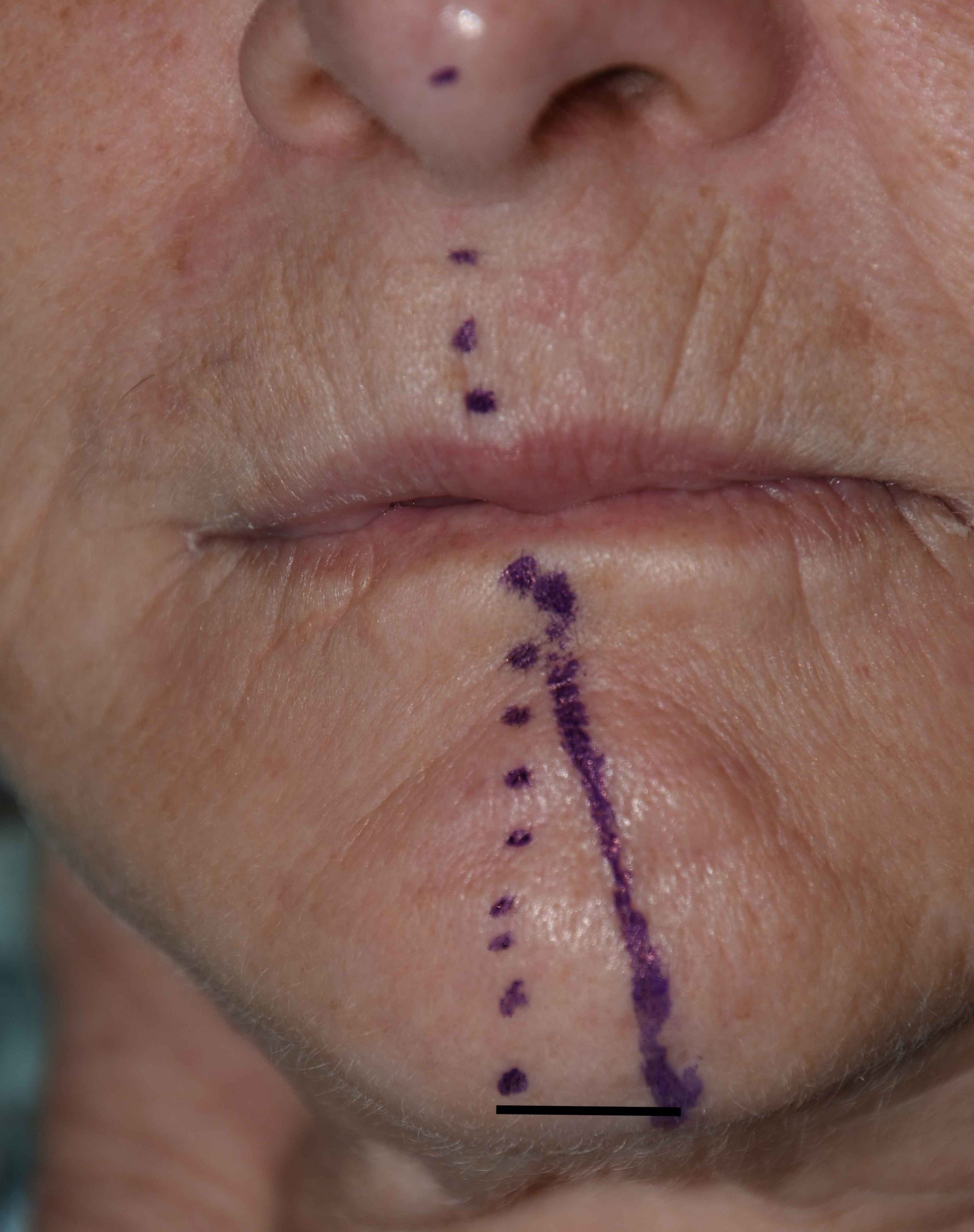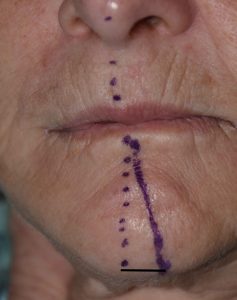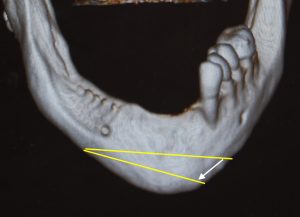Chin asymmetries are not rare and can occur by a variety of developmental issues. The lower jaw can have developed with two different sized rami which becomes evident at the most anterior projecting point of the chin with its deviation to the shorter ramus side. The jawline behind the chin may be symmetric but the chin itself has developed two different sized sides. How each of these types of chin asymmetry are treated will differ.

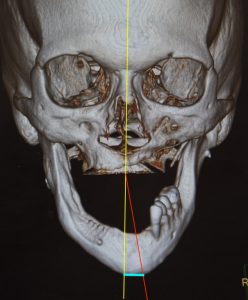
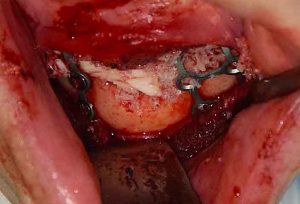
The opening wedge bony genioplasty is a common technique for chin asymmetry correction. The concept is straightforward with a horizontal bone cut and a shift/tilt of the mobilized chin segment back to the midline by creating a bone gap. How much to open up the bone gap is traditionally done by eyeballing the midline position. One make this estimate more precise by transferring the vertical angle of divergence as measured externally to that of the internal bone.
Dr. Barry Eppley
Indianapolis, Indiana

